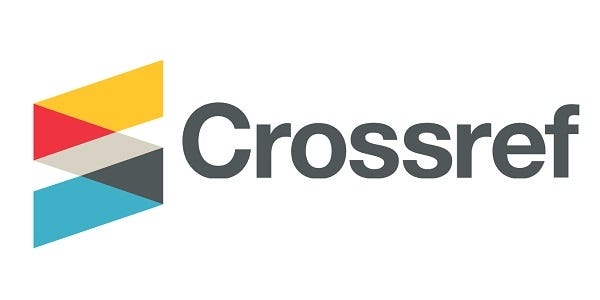STUDENTS’ PERCEPTION TOWARDS THE ROLE OF ICE BREAKING ACTIVITIES IN LEARNING ENGLISH AT SENIOR HIGH SCHOOL
DOI:
https://doi.org/10.47080/jeltl.v6i2.2793Keywords:
students’ perception;, ice-breaking;, motivationAbstract
One of many factors that can influence students' feelings while learning English is a teacher's method or style of instruction that is not precise or monotonous. A fun and attractive learning environment can help students focus better and become more motivated to learn. Applying learning strategies suitable to students' conditions is one solution for increasing students'' motivation. For instance, the "ice-breaking" activity. Moreover, this research uses a qualitative approach to achieve the purposes of the research. The participants of this study were 30 students in a particular Islamic senior high school in Sidoarjo. This study used questionnaire, interview, and observation as research instruments. The study's findings indicate that students have a positive perception towards the role of ice breaking activities in learning English at senior high school. Ice-breaking is an effective strategy for increasing student motivation. Moreover, it has the potential to encourage students to learn. So that the classroom atmosphere becomes enjoyable and students' understanding of the subject matter improves.
Downloads
References
Ary, D., Jacobs, L. C., & Sorensen, C. (2010). Introduction to Research in Education. In Wadsworth, Cengage Learning (Vol. 4, Issue 1).
Cohen, L., Manion, L., & Morrison, K. (2005). Research Methods in Education. In Routladge Falmer. https://doi.org/10.1134/S0021364007220055
Faruqi, A. I. Al. (2016). MENINGKATKAN DAYA SERAP SISWA PADA PEMBELAJARAN GEOMETRI MENGGUNAKAN ICE BREAKING. Jurnal Riset Pendidikan, 2(1), 54.
Farwati, D. Z., Rahmah, M., & Sutisna, E. (2018). the Application of Ice Breaking Activities in Teaching English To Junior High School Students. Journal of English Teaching and Linguistics Studies (JET Li), 1(1), 16–26. https://doi.org/10.55215/jetli.v1i1.1489
Hancock, B., Ockleford, E., & Windridge, K. (2009). An Introduction to Qualitative Research. In Qualitative Research (Vol. 4th, p. 504). https://doi.org/10.1109/TVCG.2007.70541
Hariati, N. (2018). The Use of Ice-Breakers (Two Truths and A Lie) to Improve Speaking Ability for EFL Learners. VELES Voices of English Language Education Society, 2(2), 91–97. https://doi.org/10.29408/veles.v2i2.861
Indrayanti, I. (2014). Icebreaker : a Strategy To Active Involvement for Young Adolescent Learners. September, 385–392.
Kadek Bagus Rusman. (2022). Implementation and Benefits of Learning through Ice Breaking. International Linguistics and TESOL Journal, 1(1), 1–4.
Kavanangh, M., Wood, L. N., & Marilyn Clark-Murphy. (2011). The first class: Using icebreakers to facilitate transition in a tertiary environment. Asian Social Science, 7(4), 84–92. https://doi.org/10.5539/ass.v7n4p84
Lesiak, K. (2015). Teaching English -- to missionaries! World Scientific News, 42(2), 192–198.
Lodico, M. G., Spaulding, D. T., & Voegtle, K. H. (2006). Methods in Educational Research: From Theory to Practice. Jossey-Bass.
Makhmudovna, K. G. (2022). Importance of Ice Breaking Activities in Teaching English. International Scientific Journal, 1(7), 117–120. https://doi.org/10.5281/zenodo.7223440
Mepieza, R. Y. (2023). The Power of Ice Breaker Activity : Examining the Impact of Icebreakers on Student Participation and Engagement in the Classroom. European Journal of Learning on History and Social Sciences, 1(1), 22–36.
Nouh, T., Anil, S., Alanazi, A., Al-shehri, W., Alfaisal, N., Alfaris, B., & Alamer, E. (2016). Assessing Correlation between Students’ Perception of The Learning Environment and Their Acedemic Performance. National Library of Medicine, 66(12), 1616–1619.
Pratama, H., Maduretno, T. W., & Yusro, A. C. (2021). Online Learning Solution: Ice Breaking Application to Increase Student Motivation. Journal of Educational Science and Technology (EST), 7(1), 117–125. https://doi.org/10.26858/est.v7i1.19289
Purnama, N. A., Rahayu, N. S., & Yugafiati, R. (2019). Students’ Motivation in Learning English. PROJECT (Professional Journal of English Education), 2(4), 539. https://doi.org/10.22460/project.v2i4.p539-544
Rahmayanti, P., Saraswati, P. A., & Bhuana, G. P. (2019). The Use of Ice Breaker To Improve Students’ Motivation in Learning English At the Tenth Grade Students of SMK YPKKP. PROJECT (Professional Journal of English Education), 2(5), 594. https://doi.org/10.22460/project.v2i5.p594-600
Ramadhaniarti, T. (2016). Teaching English Vocabulary Through Game: Views from the Students. Proceeding of the Fourth International Seminar on English Language and Teaching, 04(02), 382–387. ejournal.unp.ac.id
Riikka, H. (2009). ECYC Game Book. Teambuilding Games, Energizers and Icebreakers From Youth Clubs Around Europe. European Confederation of Youth Clubs.
Solihat, A., Astuti, A. R., & Satriani, I. (2020). The Influence of Ice Breaker To Students’ Motivation in Teaching English. PROJECT (Professional Journal of English Education), 3(2), 210. https://doi.org/10.22460/project.v3i2.p210-216
Yeganehpour, P. (2016). Using Ice-Breakers in Improving Every Factor Which Considered in Testing Learners Speaking Ability. International Journal on New Trends in Education and Their Implication, 7(1), 58–68. www.ijonte.org 58







